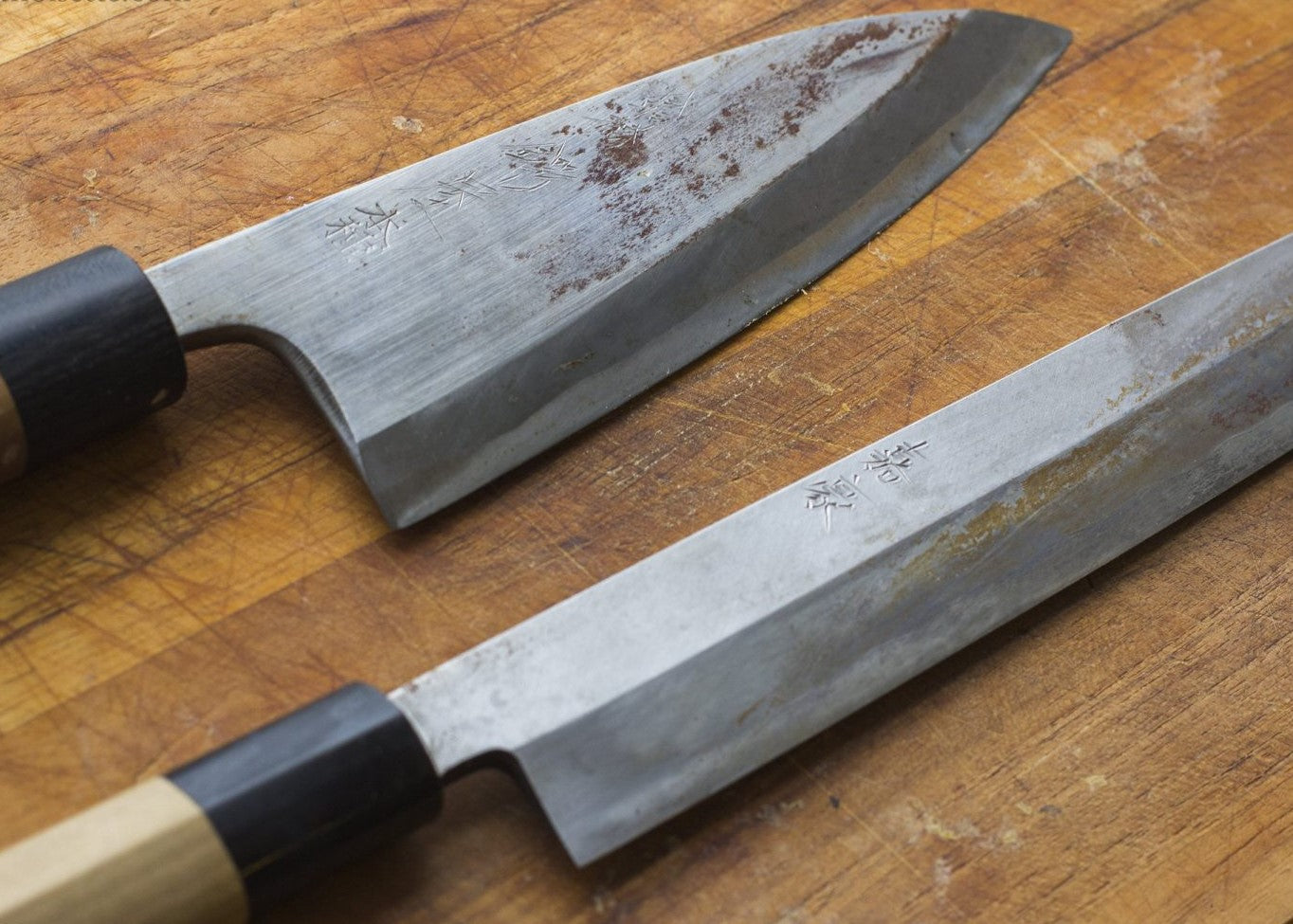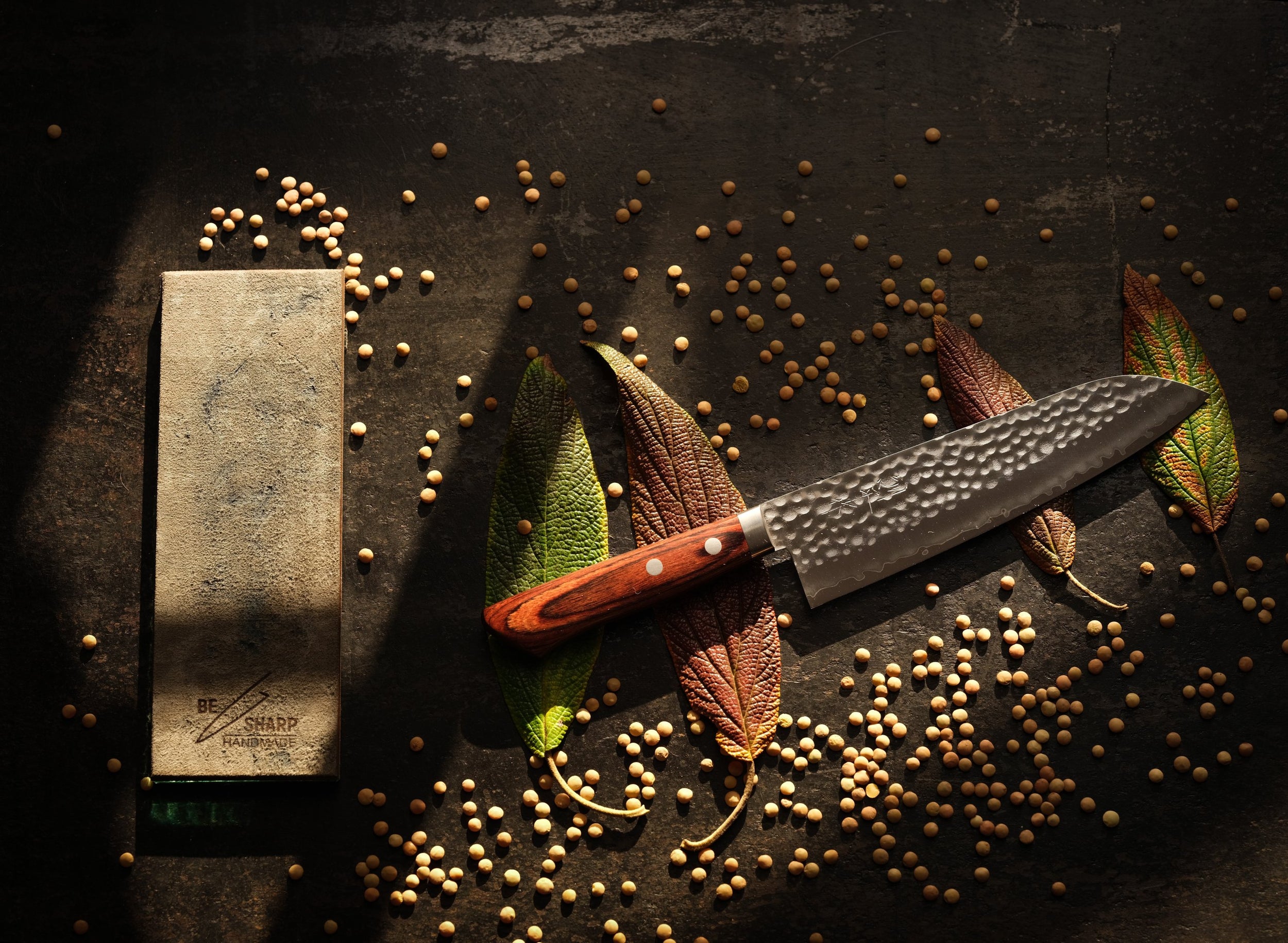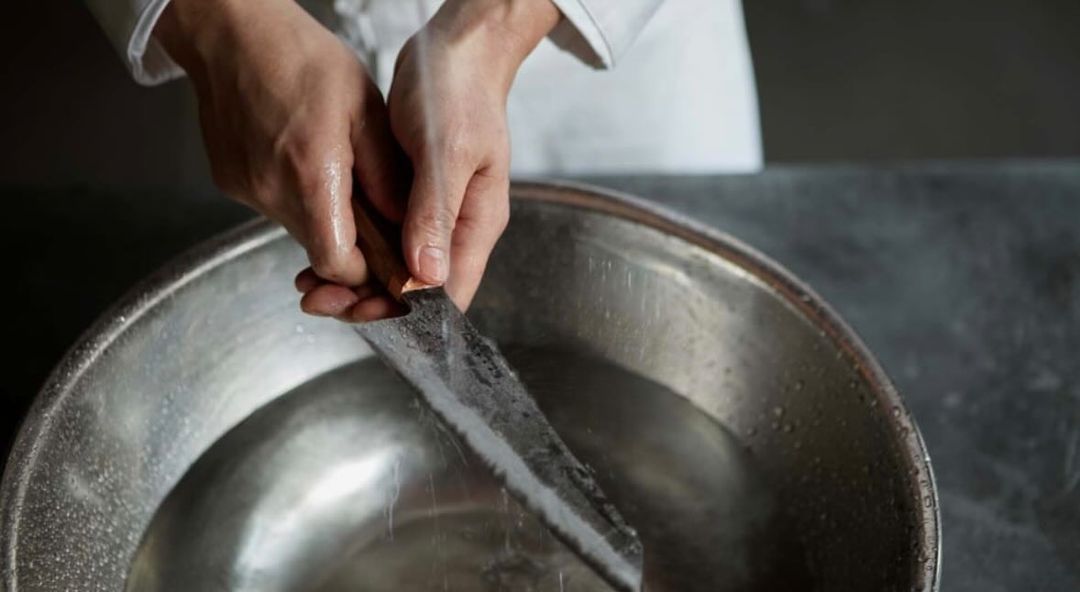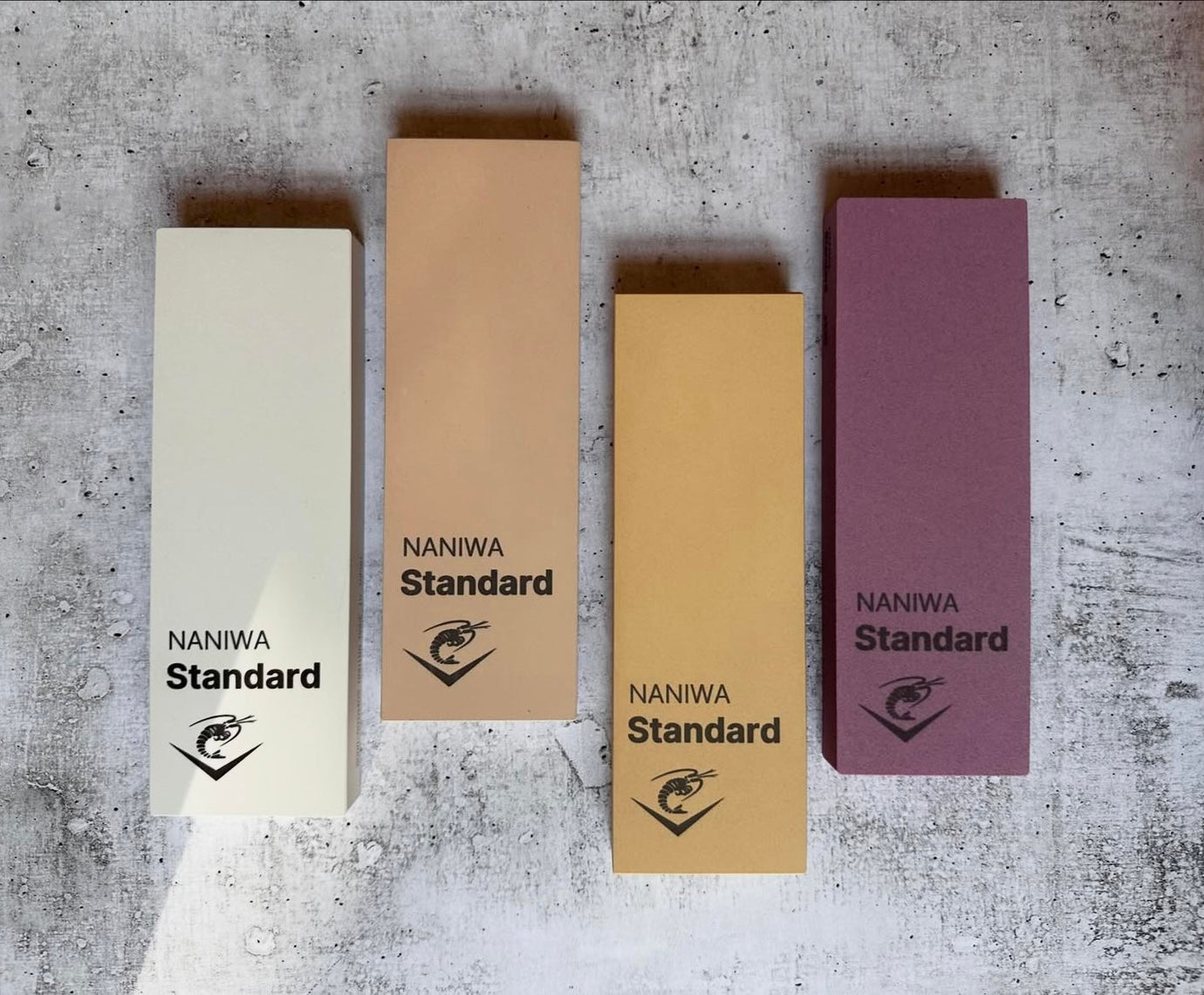Carbon knives - patina

Carbon steels are the ideal material for the production of knives. This makes them the first choice of many renowned blacksmiths from Japan. They believe that carbon steel will always be superior to stainless steel, and as the main argument they cite the duration of sharpness on the knife and the ease of sharpening it.
However, with these advantages comes one "disadvantage" that is very important to pay attention to - carbon knives can rust if they are not properly maintained.

This characteristic appears because, unlike stainless steel, the chemical element "chromium" or as some call it "prochromium" is not included in the composition of carbon steels. If the composition of a certain steel consists of chromium in at least 10% of the total mass, the steel will gain almost absolute resistance to moisture and wet conditions and we call it stainless. While rust resistance is a convenience for kitchen knives, it comes at the price of a lower level of sharpness, more frequent sharpening needs, and often softer steel.

Carbon knives, as their name suggests, have a higher percentage of carbon or carbon in them, which gives them strength and the aforementioned characteristics related to better sharpness. It is this carbon, i.e. pure steel alloy, that has a very low degree of resistance to moisture and these knives behave significantly differently. When you expose the knife to a wet or acidic environment, an oxidation process takes place that results in a change in the color of the steel. If this process takes place in a controlled manner, the carbon will oxidize only on the outside, creating a protective layer that we call patina. If we allow the reaction to take place uncontrollably, there may be an unwanted decay of carbon compounds and the formation of oxides, which we call rust. In the following text, we will also explain why patina is desirable and rust is not.
Patina
Patina is a protective layer that forms on the surface of carbon steel. This is a natural process and the way the carbon in the steel tries to protect itself from further oxidation. This means that once we properly patina a knife, we greatly improve the resistance of that steel and reduce the need to maintain that knife. Patina appears in different colors depending on the type of steel, but they are most often dark gray, blue, greenish or dark brown shades.

The color changes will be different for each user which will leave a unique stamp on your knife unique to you. It is important to know that patina does not affect the taste of food, nor does it negatively affect human health in any way. Patina can form naturally - through regular knife use, wiping and drying after use, or you can induce it artificially by deliberately exposing the steel to a food that causes it. A popular way of artificially inducing a patina is to immerse the knife in a strong solution of instant coffee for 12 or 24 hours. Simply mix a few sachets of instant coffee in water and submerge your knife until the desired color is achieved.

Rust
Rust is something we don't want to see on a knife. We recognize it by its characteristic dark orange color and it certainly does not look pretty or is desirable in food preparation. It appears in the midst of careless use of carbon knives, and most often after washing in the dishwasher or leaving a wet knife overnight.

All that is needed to avoid this is to wash and dry the knife after use. If we do not intend to use the knife for a long time, it is advisable to coat it with any edible oil and store it in a safe place.

If it happens that you forgot the carbon knife in the sink overnight (it happens to us too), don't worry, because this can be easily fixed. To remove rust, we recommend a special abrasive sponge designed for this task, which you can find on our website. In just a few movements you will remove the rust and you are ready for a new start. Also, if you are not in the mood to do it yourself, you can always bring the knife to us for professional treatment.
How to clean rust - see here.


After all that has been said, buying this type of knife should be avoided if you are buying your first Japanese knife or if you are simply not a person who would take extra care of a knife. A stainless steel knife is a better choice for you.
Carbon knives have been produced for centuries and will continue to be produced for at least some time. These knives are an essential part of Japanese cuisine and culture, and every chef owns a few. They are loved by all blade and sharpness enthusiasts for an all-around better user experience.






